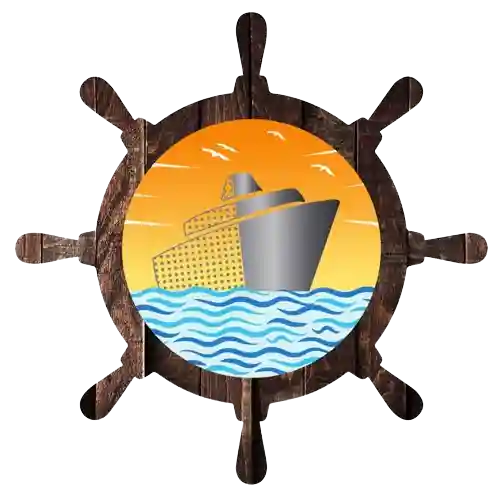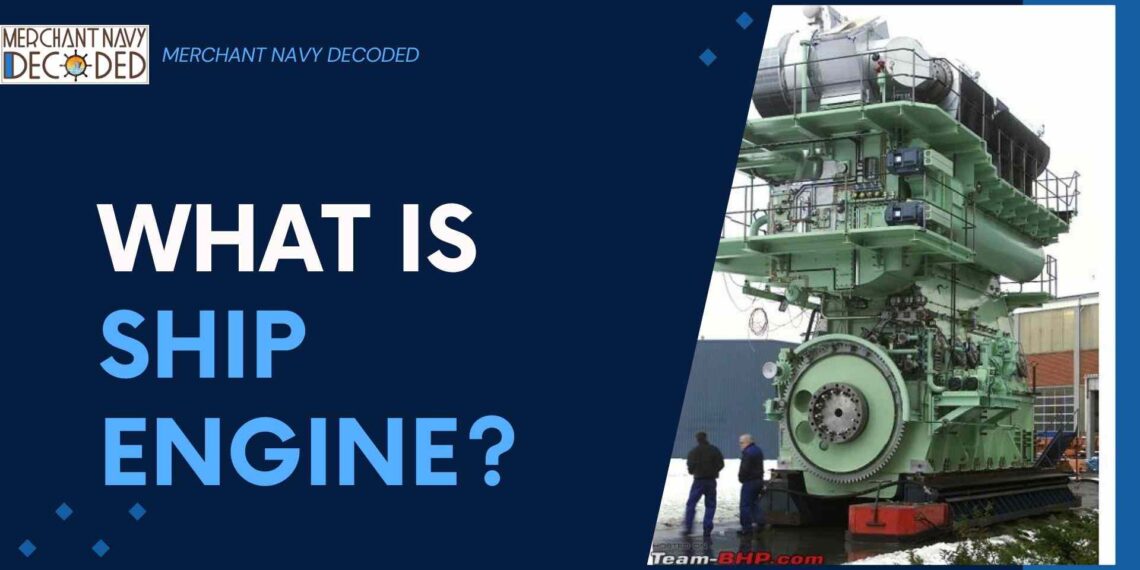Ship Engine
A ship engine, also known as a marine engine, is the primary propulsion system that drives a ship or boat through the water. It provides the necessary power to move the vessel forward and is usually located in the engine room at the bottom or stern of the ship.
There are various types of ship engines, including steam engines, internal combustion engines (diesel, gasoline, or natural gas), gas turbine engines, and electric motors. Each type has its own advantages and disadvantages and is selected based on the size and intended use of the vessel.
In general, ship engines are designed to be highly reliable and efficient, with long service lives and the ability to operate continuously for extended periods of time. They must also be able to withstand the harsh marine environment, including exposure to saltwater, corrosion, and extreme temperatures. Maintenance and repair of ship engines is a complex and specialized field, requiring skilled technicians and advanced equipment.
What is a Ship Engine?
A ship engine, also known as a marine engine, is the main power source that drives a ship or boat through water. It provides the energy needed to move the vessel forward, and is usually located in the engine room at the bottom or stern of the ship. The ship engine can be powered by different types of fuels such as diesel, gasoline, natural gas, or steam, depending on the design and purpose of the ship.

The engine converts the energy from the fuel into mechanical energy that drives a propeller or other propulsion system, which creates the thrust needed to move the ship through the water. Ship engines are designed to be reliable, efficient, and able to withstand the harsh marine environment, and require specialized maintenance and repair by skilled technicians.
Why need Ship Engine?
A ship engine is necessary for a variety of reasons. Here are some of the key reasons why a ship engine is essential:
- Propulsion: A ship’s engine provides the power to move a ship through the water, allowing it to travel from one port to another and carry out its intended mission.
- Maneuverability: The ship engine provides the thrust necessary to maneuver a vessel in tight spaces, such as when docking or navigating through narrow channels.
- Efficiency: Modern ship engines are designed to be highly efficient, using fuel and other resources in a sustainable manner to reduce operating costs and minimize environmental impact.
- Safety: A reliable ship engine is crucial for the safety of the crew and passengers aboard a vessel, providing the power needed to respond to emergency situations and avoid collisions with other ships or obstacles.
- Convenience: With a ship engine, vessels can operate independently and on their own schedule, without relying on external sources of propulsion.
Overall, a ship engine is a critical component of any vessel, enabling it to operate safely, efficiently, and independently on the open sea.
Types of Ship Engine:
There are several types of ship engines, each with its own unique characteristics and advantages. Here are some of the most common types of ship engines:
- Steam Engines: These engines use steam to generate power and are often used on older or historic vessels. Steam engines are efficient, reliable, and have a long service life.
- Internal Combustion Engines: These engines burn fuel, such as diesel, gasoline, or natural gas, to generate power. They are widely used on modern vessels due to their high efficiency and reliability.
- Gas Turbine Engines: These engines use hot gases to drive a turbine, which generates power. They are commonly used on high-speed vessels, such as military ships or ferries, due to their lightweight design and ability to produce a high amount of power.
- Electric Motors: These engines use electricity to power the ship’s propulsion system. They are efficient and produce low levels of noise and vibration, making them a popular choice for hybrid or electric-powered ships.
- Stirling Engines: These engines use cyclic compression and expansion of gas to generate power. They are not commonly used on ships due to their complexity and lower power output compared to other engine types.
Each type of ship engine has its own unique advantages and disadvantages, and the choice of engine type will depend on factors such as the size and intended use of the vessel, fuel availability, and environmental considerations.
How Ship Engine Works
Ships typically use large internal combustion engines to generate power to move the vessel through the water. The type of engine used can vary depending on the size and purpose of the ship, but the most common type is a diesel engine.
Here is a brief overview of how a ship’s diesel engine works:
- Fuel enters the engine through fuel injectors and is mixed with air in the combustion chamber.
- The fuel-air mixture is ignited by a spark or high-pressure compression, which causes an explosion.
- The force of the explosion pushes a piston, which is connected to a crankshaft, turning it and generating mechanical power.
- This mechanical power is transmitted to a propeller, which turns and propels the ship through the water.
- The exhaust gases are expelled from the engine through an exhaust system.
- The engine is lubricated by oil, which is circulated throughout the engine by a pump.
- The cooling system keeps the engine at a safe operating temperature by circulating water or coolant around the engine.
- Electrical power is generated by an alternator, which is connected to the engine, and used to power the ship’s systems and equipment.
Ships often have multiple engines, which can be operated in parallel to provide more power when needed or to allow for maintenance and repairs while still keeping the ship moving.
Here You Can See the Video
How and where is ship’s engine made?
Ships’ engines are typically manufactured by specialized companies that specialize in designing and building marine engines. Some of the leading manufacturers of ship engines include Caterpillar, MAN Energy Solutions, Wärtsilä, and Rolls-Royce.
The manufacturing process for ship engines is complex and typically involves several stages, including:
- Design: The engine design process involves the creation of detailed drawings, specifications, and computer models to ensure that the engine will meet the requirements of the ship it will power.
- Materials selection: The materials used to build a ship’s engine are carefully selected to ensure that they can withstand the high temperatures, pressures, and stresses generated by the engine.
- Casting and forging: The engine components are cast or forged from high-strength materials, such as steel or aluminum, using specialized equipment.
- Machining: The engine components are machined to precise specifications using computer-controlled milling machines, lathes, and other equipment.
- Assembly: The engine components are assembled into a complete engine by skilled technicians who follow detailed assembly instructions and use specialized tools.
Ship engines are typically manufactured in specialized facilities that are equipped with the necessary tools, machinery, and testing equipment to ensure that the engines meet strict quality standards. These facilities may be located in countries with a strong tradition of shipbuilding, such as Japan, South Korea, or Germany, or in countries with lower labor costs, such as China or India.
Note:
If you want to learn more about this topic, we suggest checking out our Combo package with the given link https://merchantnavydecoded.com/courses/c/ . It’s a great way to dive deeper into the subject through video explanations. This package covers all the important details and presents them in an easy-to-understand format. Watching the videos will help you grasp the topic better and make learning more enjoyable. So, we highly recommend giving our Combo package a try to enhance your knowledge on the subject.
Disclaimer :- The opinions expressed in this article belong solely to the author and may not necessarily reflect those of Merchant Navy Decoded. We cannot guarantee the accuracy of the information provided and disclaim any responsibility for it. Data and visuals used are sourced from publicly available information and may not be authenticated by any regulatory body. Reviews and comments appearing on our blogs represent the opinions of individuals and do not necessarily reflect the views of Merchant Navy Decoded. We are not responsible for any loss or damage resulting from reliance on these reviews or comments.
Reproduction, copying, sharing, or use of the article or images in any form is strictly prohibited without prior permission from both the author and Merchant Navy Decoded.



Very interesting article… thanks
We appreciate you sharing the issue regarding the use of images. The image has been used for the sole purpose of education and to give an idea about marine engines. If this somehow dismays you, then we are more than happy to change it.
Regards
Team Merchant Navy decoded